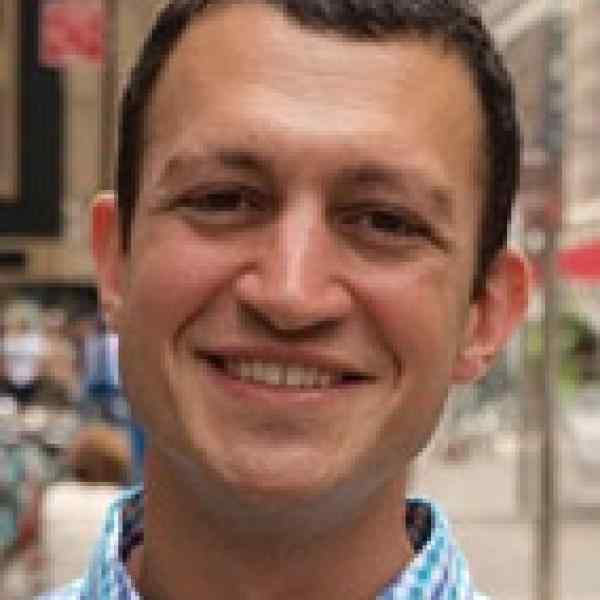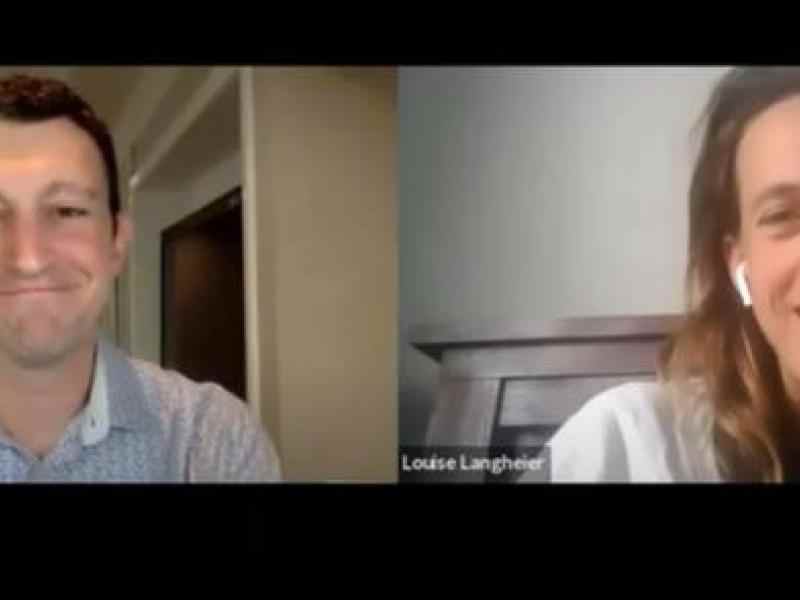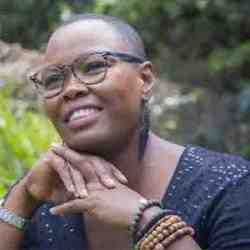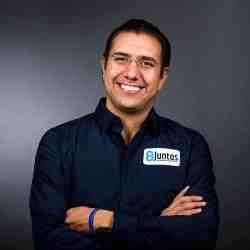Introduction
David is building a youth-powered movement designed to combat the prevailing stigmas attached to learning differences, and to equip students with the tools and sense of personal efficacy they need to self-advocate.
The New Idea
David is giving students with learning disabilities (LD) and attention deficit hyperactivity disorder (AD/HD) a voice and microphone to share their experience, challenge common stereotypes, and to develop the confidence and understanding they need to make their learning environment work for them. At the heart of the model is a peer-driven mentorship program, wherein kids with LD/ADHD are paired with college and high students who have been similarly labeled. Through a carefully designed year-long curriculum, students develop a combination of empathy and other social-emotional learning skills, and learn how to ask for the things they need to succeed in school.
Yet David realized that creating classrooms that meet the needs of all learners demands more than equipping students with the ability to self-advocate: after all, even the best intentioned teachers often lack the know-how to effectively design classrooms and teaching strategies to best engage dyslexic and other students with learning differences He is thus building a network of current Eye to Eye mentors and recently graduates to serve as Think Different Diplomats, who are then strategically deployed to schools, universities, and conferences to dispel stigmas, educate stakeholders, and advocate on behalf of students who think differently.
The ambassador network, together with a forthcoming book set to be published by HarperCollins in August, and a variety of creative media strategies, is part of an effort to create a platform through which young people with learning differences can challenge pervasive cultural stigma, and equip teachers, parents, and policymakers with the tools they need to better address the needs of the LD community. Begun while David was a college student at Brown University, Eye to Eye today works directly with thousands of students across the country, powered by 57 chapters in 22 states.
The Problem
There are currently 2.4 million students in the US—and one in five of the overall population—who have been diagnosed with a learning disability (LD). Despite such staggering numbers, US classrooms have been designed to accommodate just one type of learner. Students are asked to sit still for most of their day, and frequently work alone; their papers are assessed on the basis of their spelling ability, rather than the ideas they contain; and their performance is measured according to their standardized testing ability: just three of the myriad sources of struggle for young people who learn differently.
As a result, one in three drop out, or receive only a certificate of completion. While 54% of students with learning disabilities aspire to go to college, less than 10% attend a four-year college or university. Young people with learning disabilities go on to face higher unemployment and incarceration rates. Indeed, 50% of those in the juvenile justice system report having learning disabilities.
Behind those stark life outcomes is something of far more devastating consequence than poor grades: marred by failure and lacking successful role models, students come to believe that it is they who have the problem, rather than the system. This sense of shame leads to low self-esteem and a lack of agency, made evident by the fact that students with learning disabilities consistently report feeling powerless over their personal and educational environment. They are more likely to be victims of peer bullying than are their peers without LD, and they are generally less accepted by their fellow students. For students faced with other signals that they are “less than”—-whether due to skin color, economic class, or sexual orientation—-the message that they aren’t good enough is one that is all too easily internalized.
Research strongly suggests that the most important factors determining life success for those with LD /ADHD are not IQ or academic success, but self-esteem, self-awareness, and self-determination. Yet the measures of success for students and their teachers tend to focus solely on the cognitive elements of education, while key competencies such as self-awareness, self-management, and critical thinking take a backseat.
Over the last decade, significant steps have been undertaken at a policy level to ensure that students with LD/ADHD are not discriminated against, and receive appropriate academic accommodations. Legally, every child has the right to the least restrictive learning environment: Once a child is identified as LD/ADHD, he or she is entitled to an Individualized Education Program, more commonly known as an IEP. An IEP is a contract between the child’s family and the school, guaranteeing the student whatever he or she needs to be successful—whether that means extra time on tests, access to a walking break, audio assistance, or the like. These agreements follow a child throughout their time in school, and are reviewed every year and re-evaluated every three years to assess changes in his or her learning needs.
Unfortunately, a lack of enforcement and resource distribution has meant that such statutes do not always translate into practice, particularly in low-income schools. Among underserved communities, young people with learning disabilities experience the highest levels of academic failure. They are more likely to be denied appropriate accommodations, and placed in self-contained classrooms isolated from their peers. Black and Hispanic students with disabilities experience higher rates of school disciplinary action, are more likely to drop out of school before high school, and experience lower rates of graduation.
Moreover, such efforts have failed to tackle the root cause of the problem: a pervasive cultural stigma, and a tendency to conflate learning differences with a lack of intelligence. Teachers and parents are more likely to perceive disabilities negatively and hold lower expectations for personal and academic success for youth labeled with LD. A mere 14% of parents of students with LD believe their child will graduate from a two-year college, and only 10% believe their child will graduate from a four-year college or university. In turn, these lower expectations contribute to the labeled students’ lowered expectations for themselves, creating a debilitating cycle of failure, depression, isolation, and behavioral problems.
The Strategy
David was a freshman at Brown University when he and several friends launched Eye to Eye. The organization began as a mentoring program, pairing college students labeled LD/ADHD with similarly labeled elementary school students. From the very beginning, David and his team set out not to teach students to read, or to improve their math scores, but rather to help them understand how their brains worked and how they learned best, and to self-advocate for what they needed. The goal was simple: to provide K-12 students with role models who had lived through the same struggles and learned to navigate the educational system, and in so doing, to provide them with hope. That goal, and the mentorship program behind it, remains central to the model today.
Mentors and mentees meet weekly in a group setting throughout the school year, engaging in a carefully developed arts-based curriculum, designed to generate conversations around common struggles in a low-risk environment. Early on, David found that art was an effective means of creating a safe space between mentor and mentee, opening the door to a shared conversation. Students who struggled academically in school could often thrive in the art room, yet the end product hardly mattered: art itself created a common language between mentors and mentees who might be a decade apart in age, and allowed kids to express their feelings with metaphors and imagery, rather than words.
Through the program, students develop a combination of social-emotional competencies and what’s known as metacognition, developing the skills and self-awareness they need to articulate how they learn best. They learn what it means to self-advocate, and practice how to appropriately ask for the things they need in school. They learn about individualized accommodations and assistive technology that can lessen or eliminate their academic struggles, and work alongside their mentors to establish short- and long-term goal.
A research study designed and conducted by Harvard’s Graduate School of Education and Columbia University Teachers College revealed significant improvements in self-esteem and self-advocacy among students with LD/ADHD. At the close of one year, 85% of students felt better about themselves, and 73% believed that their mentor helped them learn how to ask for the things they need in order to do well in school. Of the study participants, 87% reported that their mentor helped them to think about their future positively, and 87% likewise reported that “being a part of Eye to Eye got me to think about what I am good at."
David is now pursuing a clustering approach to developing and sustaining chapters, in order to maximize the organization’s impact across a particular district or state and to open the door to broader policy conversations at a district and state level. New chapters within those clusters are chosen according to a strict set of criteria, including whether the school is located in a high need district, socioeconomic status of the community, growth potential, and the commitment on the part of the sponsoring college or university to covering a percentage of the chapter costs.
David realized, however, that the mentoring program on its own was not enough to tackle the pervasive stigma associated with learning differences: he needed to reach beyond Eye to Eye classrooms, to change the very way in which teachers and parents—and by proxy, students themselves—viewed LD/ADHD.
In 2012, he began launched what he calls “Think Different Diplomats”: an emerging corps of college student leaders active in local Eye to Eye chapters, whose job is to dispel stereotypes and misperceptions about what it means to have a learning disability. The Diplomats receive extensive training in the art of storytelling, and are then strategically deployed to conferences and meetings with key stakeholders. In less than two years, they have given more than 150 lectures nationwide with congressmen and senators, school administrators, teachers, parents, and students. The platform has given students with disabilities an increasingly vital role and voice in the education reform movement. To date, Eye to Eye has trained more than 50 young leaders with learning differences, with the goal of training and deploying 25-30 Diplomats each year.
The Think Different Diplomat program is one of several tactics designed to shift our current paradigm regarding how we see and treat young people with learning differences. To supplement the Diplomats’ efforts, David is currently writing a book to be released by Harper Collins in August 2014, called Thinking Differently. The book will serve as the definitive owner’s manual on how people with LD/ADHD learn, think, and grow, written from the perspective of young men and women who’ve lived that experience. By capturing the lessons and principles behind Eye to Eye, David hopes to share with parents strategies that they can employ at home to help their children become more confident self-advocates in the classroom. The book will coincide with an awareness campaign sponsored by the Ad Council, designed to combat the myths and misinformation surrounding learning disabilities, and conducted in partnership with several foundations and prominent NGOs in the space.
For the last year, David has been working with New Profit on a new domain called Learning Differences and Social Emotional Learning, inspired in large part by Eye to Eye. The coalition, consisting of a number of social entrepreneurs—including Peace First, Turnaround for Children, and New Teacher Center—together with engaged philanthropists, and other key thought leaders/stakeholders has developed a framework and theory of change based on some of the key principles behind David’s work, particularly around the importance of student agency.
Thanks in part to such efforts, Eye to Eye is now partnered with City Year and David is actively exploring potential partnerships with other prominent teacher networks to provide training and awareness-raising for their members on how to better support students with learning differences. Recognizing that every teacher aspires to be a better teacher, and to help kids fulfill their potential, David begins with what he calls a “reorientation,” designed to shift participants’ framework away from “learning disability” toward “learning difference”. The next stage in the process has to do with understanding the gaps, and helping teachers to understand what options are available to them when it comes to helping their students succeed. Finally, recognizing that no amount of accommodations can make for the toll that labels often place on students’ self-esteem, he works to equip teachers to create more empathetic classrooms, and shares an array of tools designed to boost students’ metacognition. While such partnerships are nascent, they represent a powerful opportunity to take what has worked in Eye to Eye classrooms to scale.
There are today 57 Eye to Eye chapters housed on high school and college campuses in 22 states throughout the US, resulting in more than 60,000 hours of community service logged by participating college students each year. In 2012-2013, Eye to Eye worked 1,632 students, and is projected to serve 2,500 by 2015-2016, through a total of 85 chapters. Thanks to a carefully cultivated diversified funding base, derived from a combination of foundation, individual, and corporate investments, Eye to Eye has grown from serving a total of 368 constituents in 2005, to more than to 8,450 today, including mentors and mentees, teachers, parents, chapter leaders, and more.
The Person
For most of David’s early life, school was a source of constant struggle: of failed spelling tests, and minor disciplinary infractions, of lost homework assignments and teachers who believed he simply wasn’t trying hard enough. It was, in short, a source of shame.
David was 10 when he was diagnosed with dyslexia and AD/HD. While the diagnosis gave him language to explain why he’d experienced such challenges, it did not, on its own, give him tools to cope. It wasn’t until his parents enrolled him in a school for kids with learning disabilities that he suddenly discovered he wasn’t alone. Surrounded suddenly by teachers and peers who understood and cheered him on, sharing strategies and teaching methods suited to his way of thinking, David came to see that he wasn’t broken. In place of multiple-choice tests, he was able to give interactive in-class presentations to demonstrate his knowledge and mastery of the material. No longer in an environment that daily exposed his weaknesses, he suddenly discovered his strengths.
He excelled, and was eventually accepted to Brown University. In his first week there, he went to a meeting about the various accommodations and services available to students with learning disabilities. He was one of just 25 students with a learning disability, of a student body of 5,500. Hungry for the same kind of peer community he’d experienced at his previous school, he asked at the end of the meeting for everyone’s contact information, and suggested they hang out.
Later that year, David and several friends started Eye to Eye. They partnered with a nearby elementary school, and began mentoring kids who had been similarly labeled. They wanted younger students to see the careless, discriminatory language of learning deficits and abnormalities for what it was, and to help them transcend the shame they had experienced, and to expose them to a set of pathways few could imagine for themselves.
After graduation, David began working in the admissions office at Brown. He began receiving emails from other college students throughout the country who had heard about Eye to Eye, and wanted to start chapters of their own. In 2002, he quit his job and moved to New York, becoming the first Executive Director of the organization.
He ran the organization out of his tiny apartment, working to hone and codify the group’s curriculum, and to grow a peer network of chapter leaders, transforming what was once a college student group into an organization out to give voice to young people who learn differently.

 Tile image
Tile image

